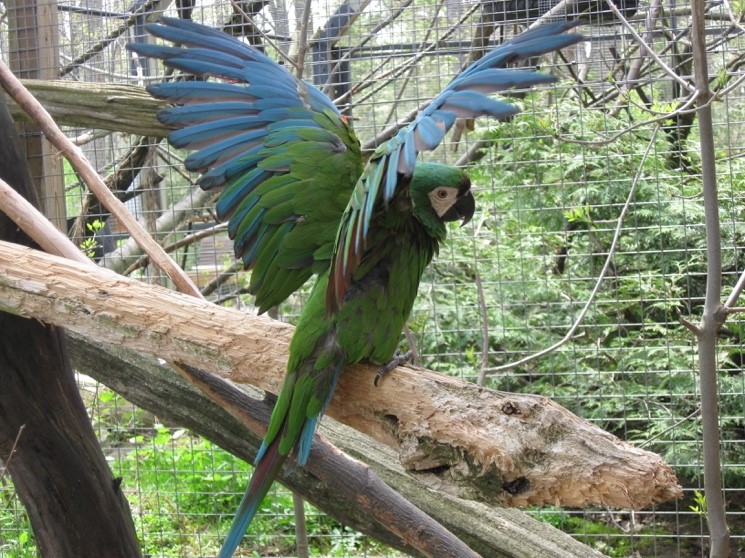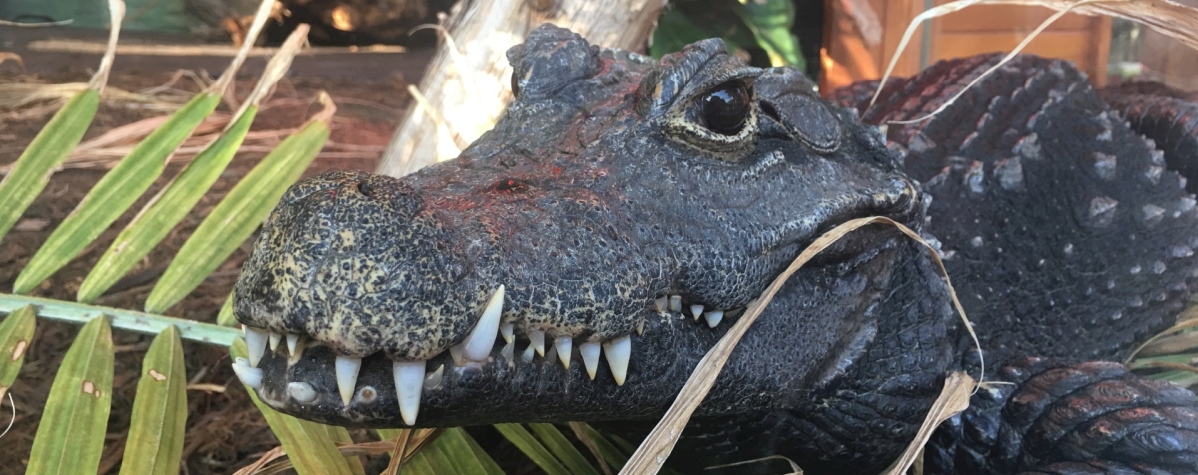Chestnut-fronted Macaw
Scientific Classification 
| Species |
Ara severus |
| Kingdom | Animalia |
| Phylum | Chordata |
| Class | Aves |
| Order | Psittaciformes |
| Family | Psittacinae |
| IUCN Status | Least Concern |
Appearance and lifespan
The Chestnut-fronted Macaw is one of the largest of the Mini-Macaws. It reaches a size of around 45 cm (18 in) in length, half being the tail. It weighs up to 400g (0.88lb).
The plumage of the Chestnut Fronted Macaw is mostly green. Their head is a dull blue and has a chestnut brown patch just above the black beak. The bend of their wings and their underside are a dull red. Their tail feathers are brownish red with blue tips, the underside of the tail is a dull red. Their facial area is creamy white with lines of small black feathers and their feet are flesh coloured.
The lifespan of the Chestnut-fronted Macaw can be up to 40 years of age in captivity, but is suspected to be much lower in the wild.
Behavior and reproduction
During breeding season Chestnut-fronted Macaws are normally seen flying in pairs but the rest of the year they can be seen in small groups of 3 to 20 birds. Often they can be found with other Macaw species roosting in feeding trees as well as visiting clay licks by the riverside with all different species of parrots. They are difficult to see in the trees, their plumage provides them with excellent camouflage but their loud calls usually give them away.
Chestnut-fronted macaws usually nest in hollows in trees. The female incubates the eggs for about 28 days a normal clutch is 2 to 4 white eggs. The young leave the nest at about 10 weeks old but they will fly with their parents for several weeks, who will continue to feed them until they can feed themselves. This is an important stage in their development, where they learn from their parents the survival techniques they will need throughout their lives. Their main predators are boa constrictors.
Ecology and habitat
Chestnut Fronted Macaws inhabit open forests, woodlands, savannah with stands of trees and palms and the edges of rainforests up to 1.5 km. Their range extends from Panama down the Pacific slope of the Andes to Ecuador. Range also extends east of the Andes in the upland slopes of the Amazon basin to Bolivia and the Pantanal and northeast to Surinam.
Their diet consists of seeds, fruits and flowers; they will often fly long distances in search of fruit trees. They are considered pests in the local villages where they will raid the maize crops.
Food at the Zoo
At the zoo, the macaws eat a parrot mix consisting of pellets and fresh fruit as well as a variety of vegetables, seeds, and nuts. They also like to eat hard boiled eggs and cheese.
Threats
The Chestnut-fronted Macaw is common in most of their area of distribution. In Bolivia, the international parrot trade has caused significant problems in the past but since the early 1980s, the parrot trade has been banned.
Did you know?
- The Chestnut-fronted Macaw is sometimes called the Severe Macaw.
- Chestnut-fronted Macaws are very interactive can be taught various behaviours to enrich their lives in captivity.
- It has been said that their calls sound like a braying donkey.
Adopt a macaw
Become a part of the the Riverview Park and Zoo family through our Adopt an Animal Program!


